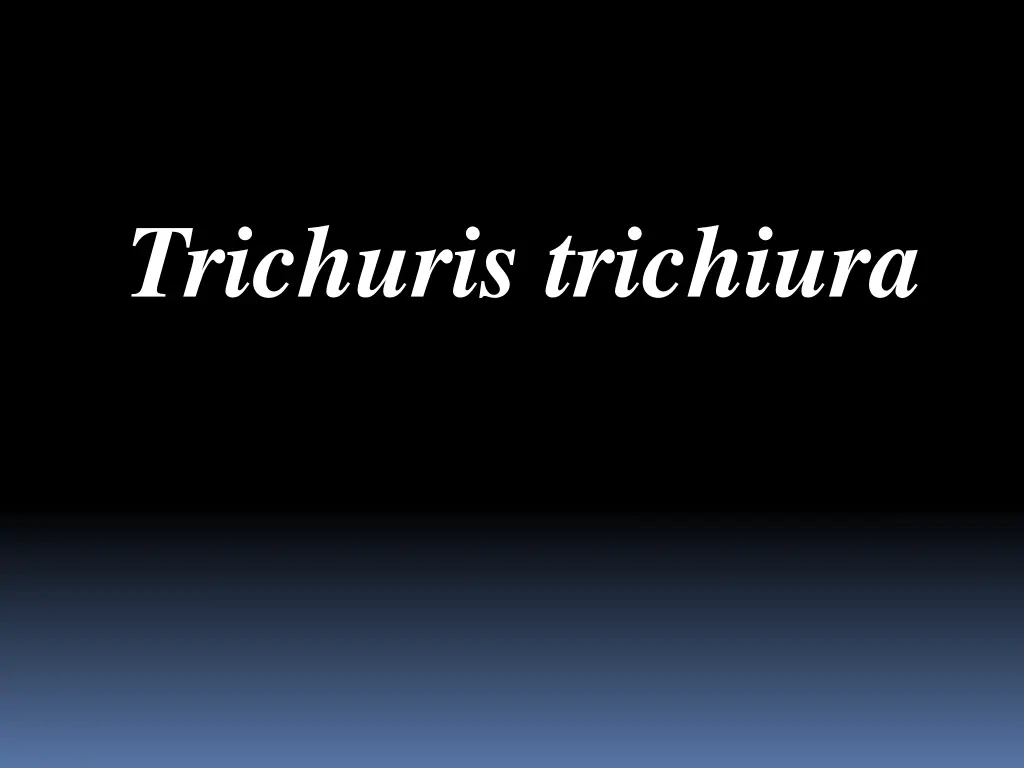
Understanding Trichuris trichiura - The Whipworm Parasite
Learn about Trichuris trichiura, commonly known as the whipworm, a parasitic nematode that infects the human gastrointestinal tract. Explore its life cycle, characteristics, and habitat, along with detailed images illustrating its different stages and effects on the human body. Understand the importance of sanitation in preventing the spread of this parasite.
Download Presentation

Please find below an Image/Link to download the presentation.
The content on the website is provided AS IS for your information and personal use only. It may not be sold, licensed, or shared on other websites without obtaining consent from the author. If you encounter any issues during the download, it is possible that the publisher has removed the file from their server.
You are allowed to download the files provided on this website for personal or commercial use, subject to the condition that they are used lawfully. All files are the property of their respective owners.
The content on the website is provided AS IS for your information and personal use only. It may not be sold, licensed, or shared on other websites without obtaining consent from the author.
E N D
Presentation Transcript
Trichuris trichiura, commonly known as the whipworm, is a parasitic nematode that infects the human gastrointestinal tract, primarily the cecum and ascending colon1 The name "whipworm" comes from its distinctive shape, which resembles a whip . with a long, slender anterior (front) part and a thicker posterior (rear) part. The habitat of Trichuris trichiura (whipworm) primarily includes the human gastrointestinal tract. They reside mainly in the cecum and the large intestine. Outside the human host, the eggs of T. trichiura can be found in soil, especially in areas with poor sanitation where human feces contaminate the environment. The eggs need moist soil to mature and become infective.
Trichuris trichiura Life cycle
Trichuris trichiura: A-Female: whip-like body with thin anterior 2/3body thick posterior 1/3 body. bead-like cells surrounding intestinal tract in the anterior end, called stichocytes.
B-Male: body same as in female. posterior end strongly curved with one spicule.
Trichuris trichiura in the large intestine. Many worms are present, each with its anterior end embedded in the intestinal mucosa, resulting in the erythema.
c. section in mucosa: small round section in anterior part of worm, in columnar epithelial cells of mucosa. larger rounded sections in posterior part of worm, in lumen of intestine.
D-Eggs: Barrel-shaped or lemon-shaped eggs With lateral plug like thickining. Egg single-celled, unembryonated.
Plug Plug In Iodine s. In saline s. Trichuris trichiura Egg 50 X 25 m Note : the egg barrel shaped, with two polar plugs yellowish brown in colour ( bile stained ) has a double shell, the outer one is bile stained
